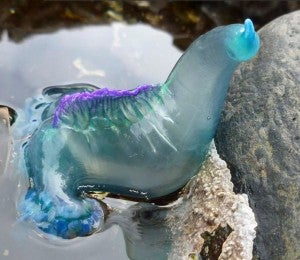Siphonophores and Multicellularity

I just read Wired’s Absurd Creature of the Week post on siphonophores. They are amazing creatures, composed of colonies of cloned individuals that specialize for different functions. This is different from animals, which are colonies of specialized cells (plus billions of bacteria). Each individual in a siphonophore has multiples cells that are also differentiated, so each individual is a bit like an animal in that way. However, the individuals all live together as a single organism, with each individual performing a specific function. The individuals can’t live and reproduce on their own; only the reproductive specialists can produce sperm and eggs and those individuals can’t eat food. Thus, they must be part of the colony that makes up the organism. And each individual, actually each cell, has the same genetic code – they are clones of each other.
So is each individual actually an organism?
Or is only the whole colony an organism?
What does it mean for something to be an organism? An individual? Did I use these words in an acceptable way when describing siphonophores?
Could colonies of individuals, which are colonies of cells, be a good alternative model for complex life elsewhere in the universe? How many recursions and layers of colonization can you get?
Leave a Reply